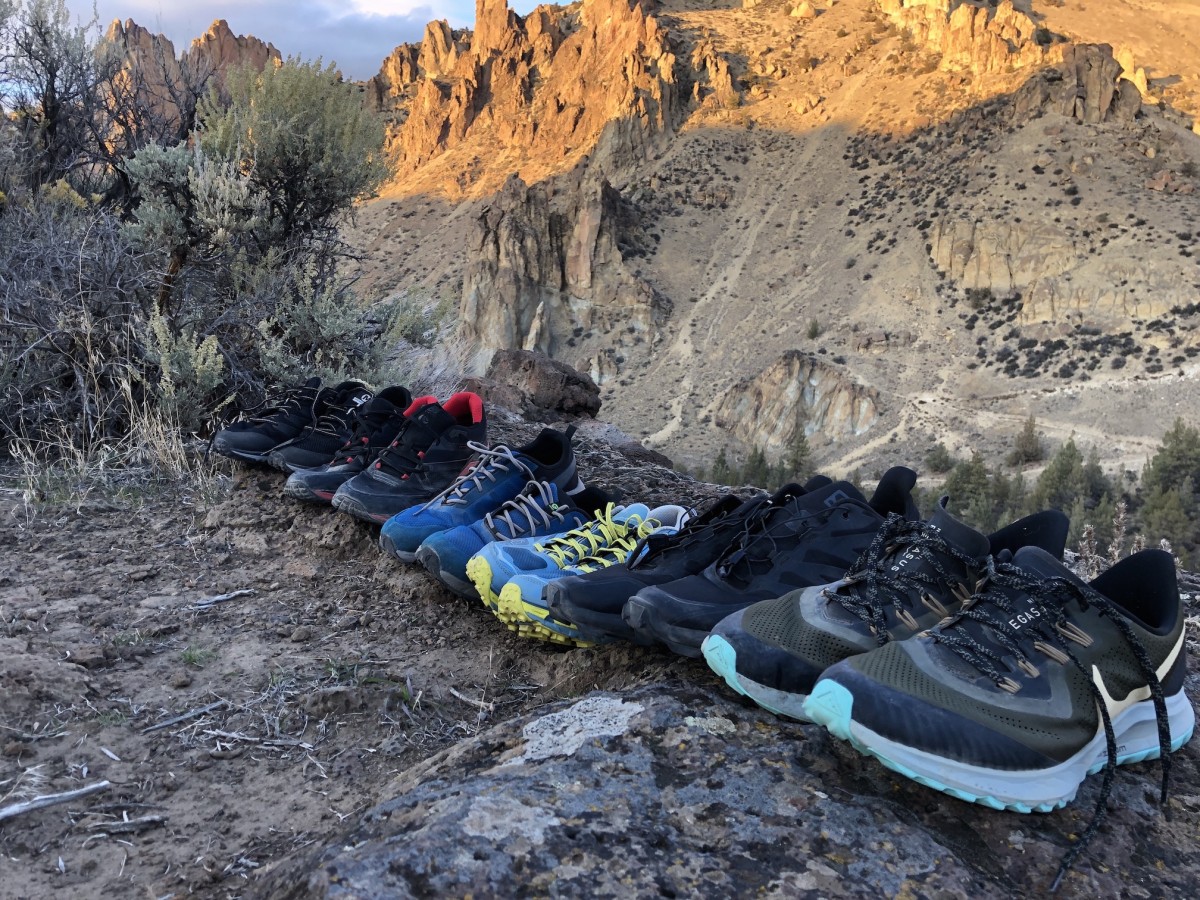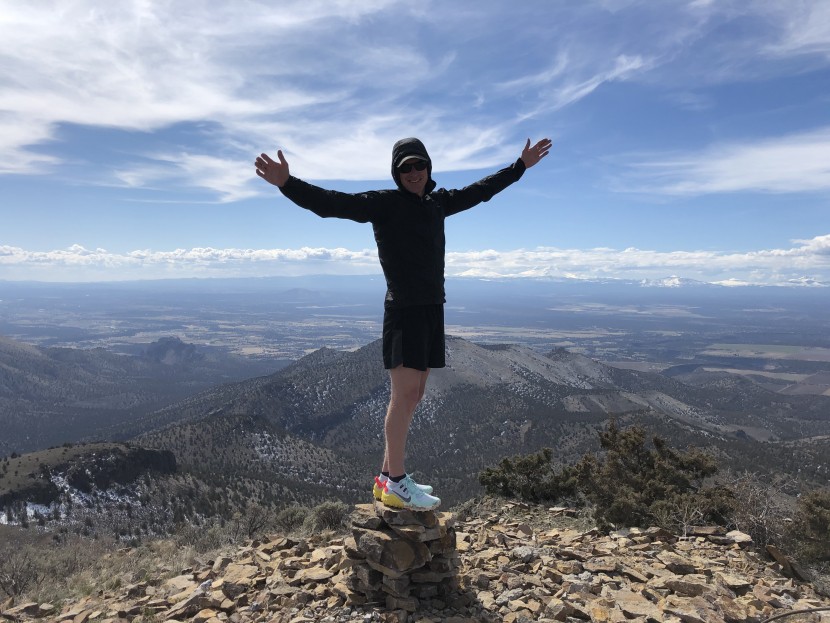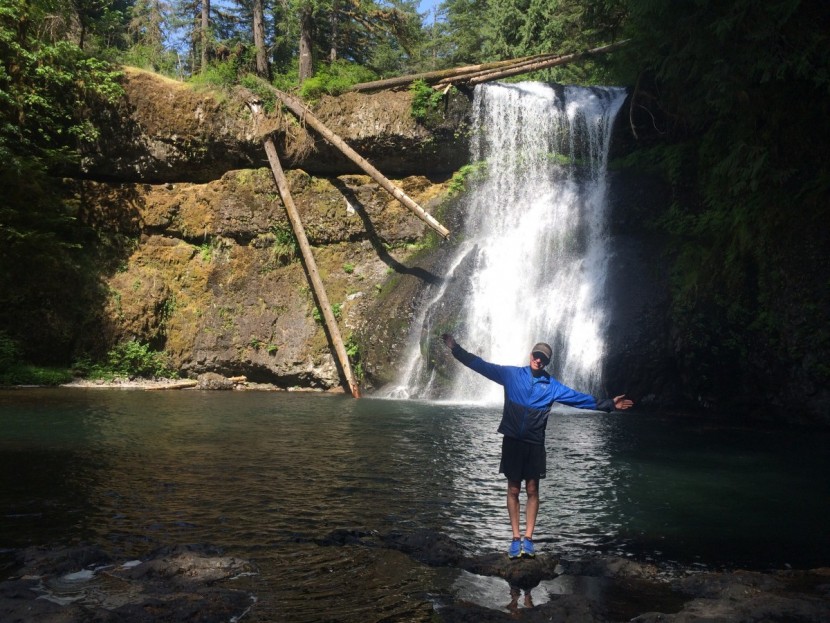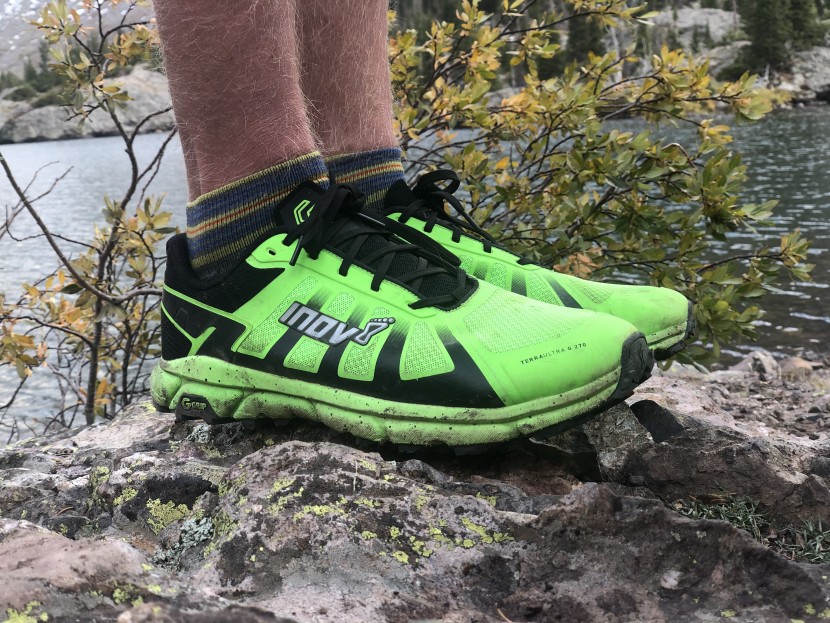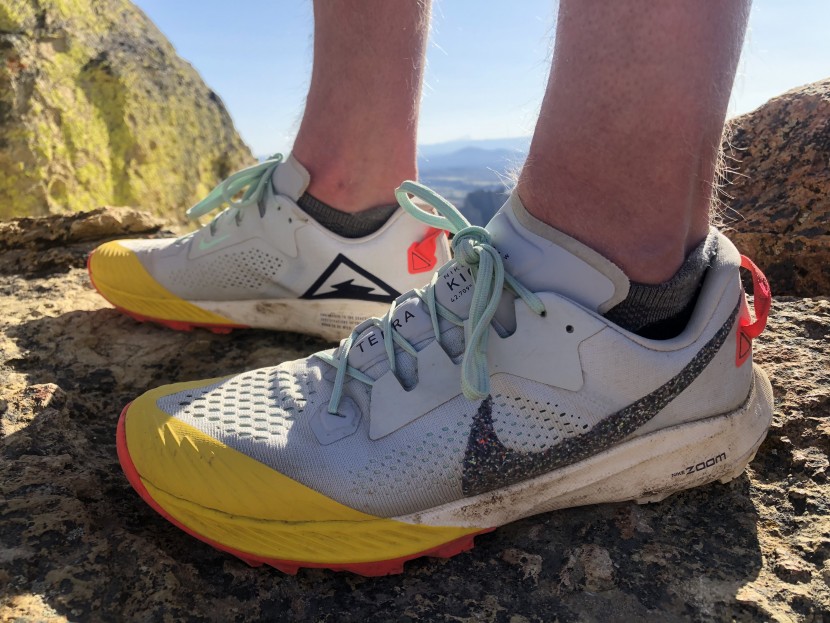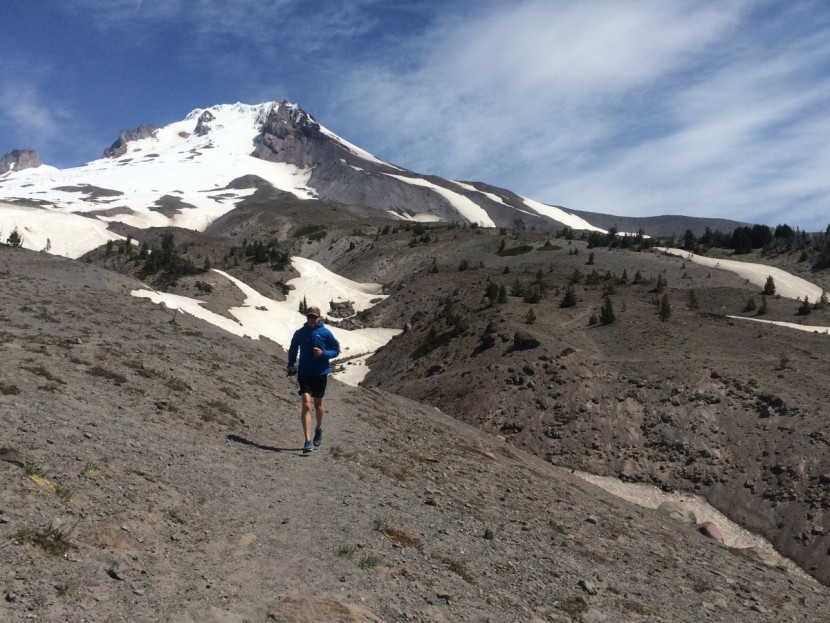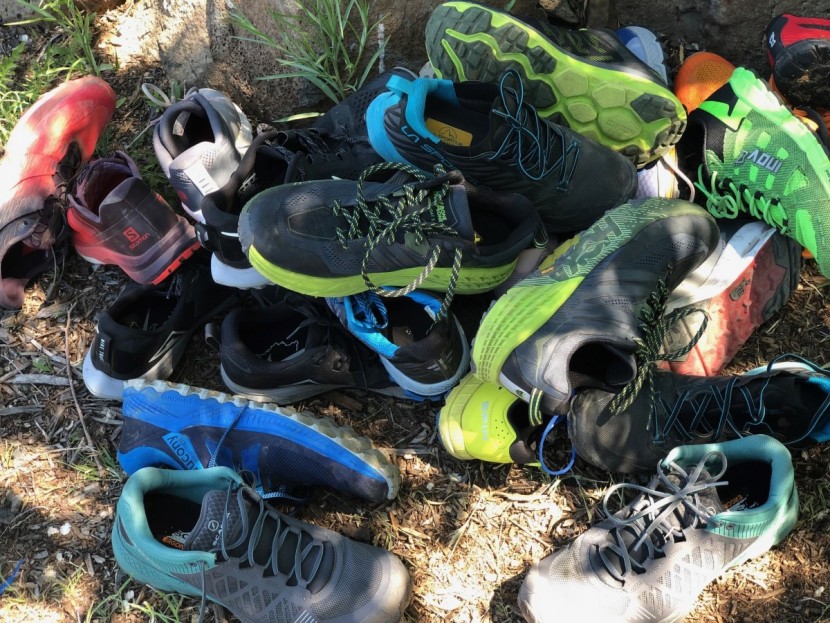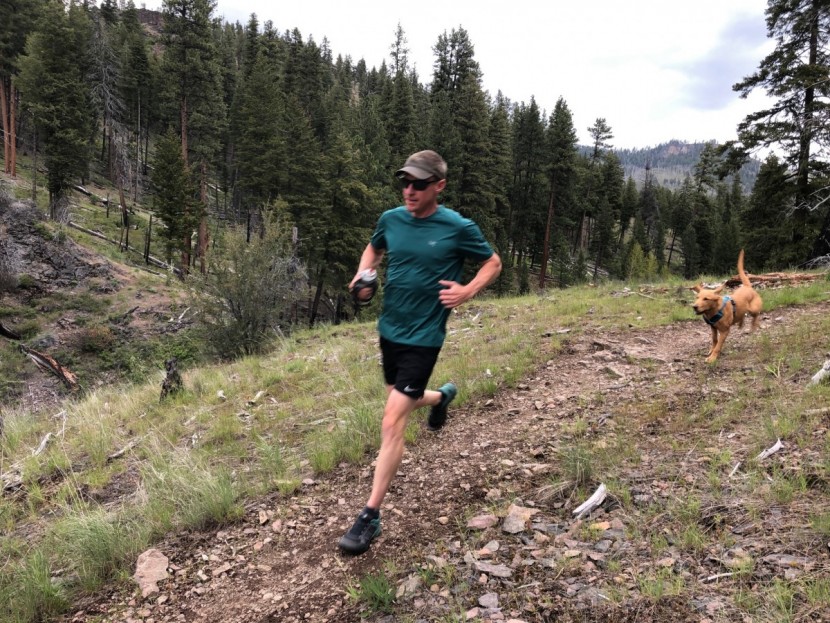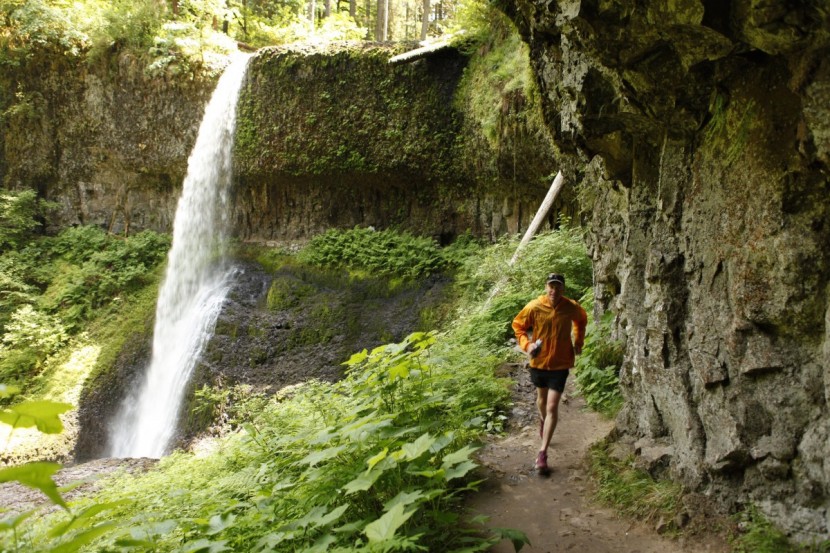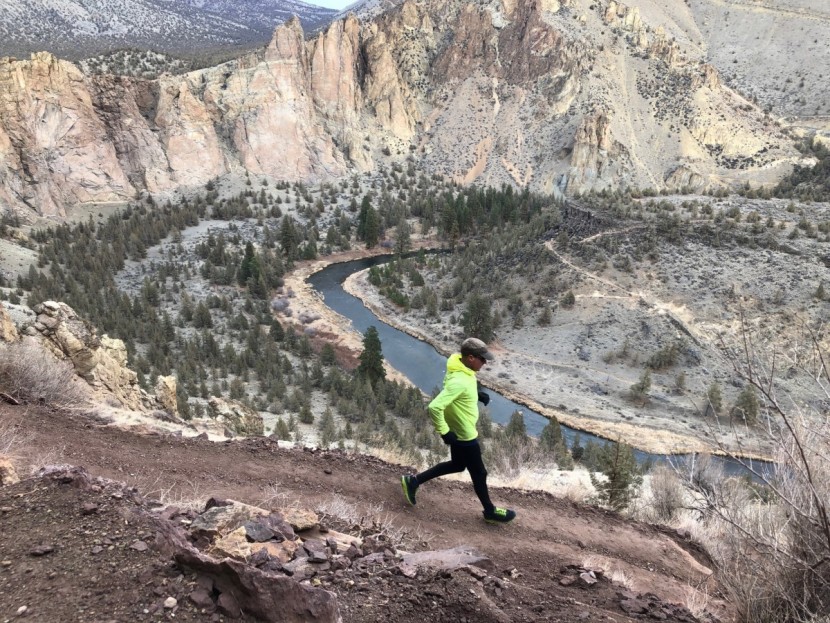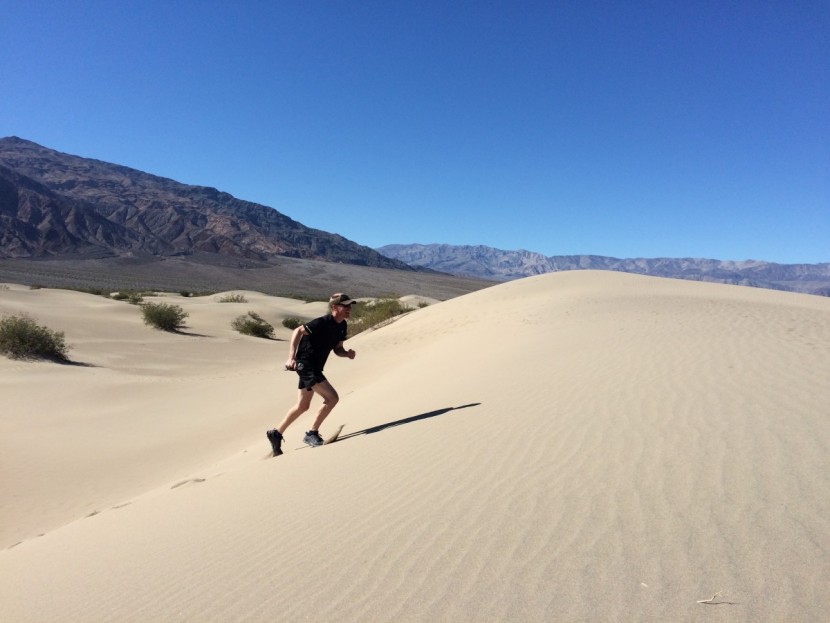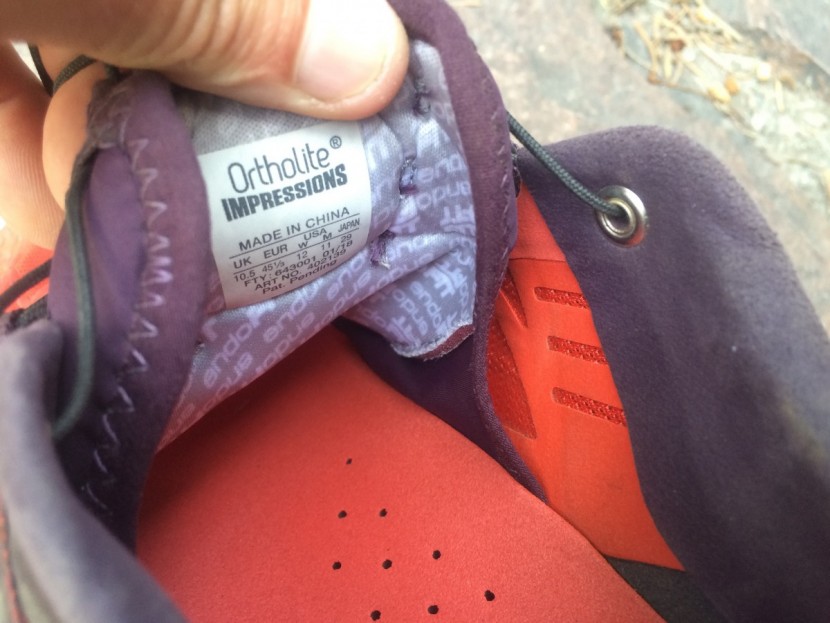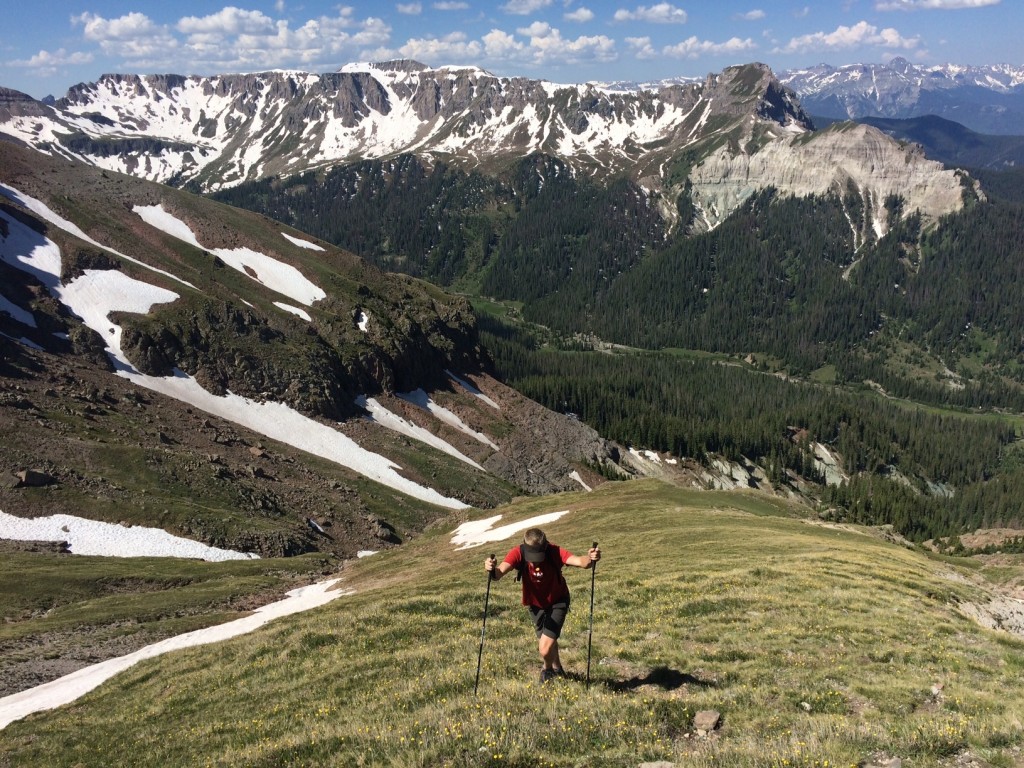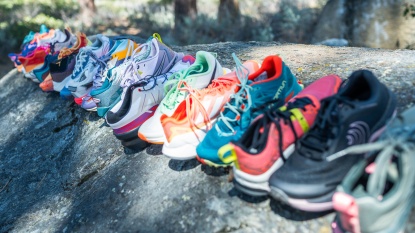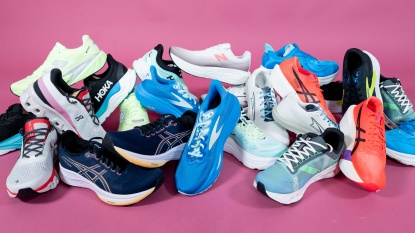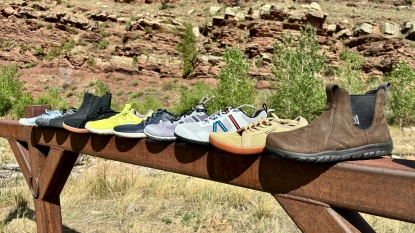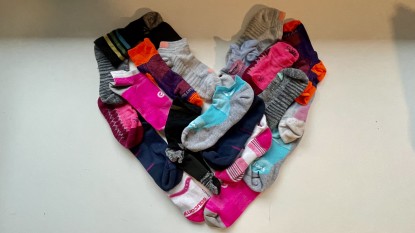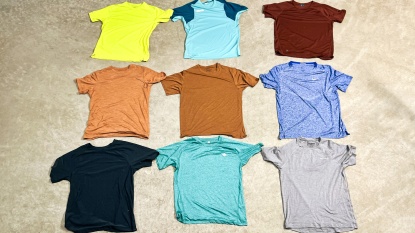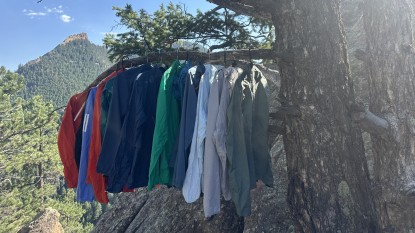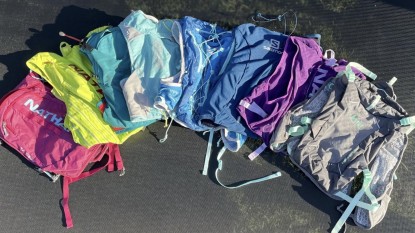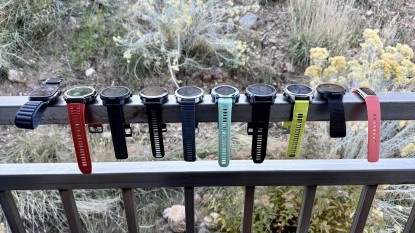Approaching the giant wall of shoes at a quality running store and somehow coming away with the perfect shoe for you can be a daunting task. It's even harder when you don't have a giant wall to look at, only a scrollable page on a website. To help with this process, we've created this buying advice article to give you more information on the differences between styles of men's trail running shoes. We also aim to highlight potential deciding factors that can significantly narrow down your selection before you even begin to search. Additionally, we bought and tested some of the top options available today to find out which ones best fit the specific needs of a dedicated trail runner. If you aren't sure what the most important characteristics of a shoe are for your needs, then read on below.
Why Trail Running Shoes?
Why choose to buy specialized trail running shoes at all? After all, before about 25 years ago, there was no such thing as a trail running shoe, yet people still accomplished amazing things running on trails or even up and down mountains. It is certainly possible to run on your local trails in your favorite road running shoe, and indeed some people choose to do precisely that. However, we believe that if you intend to make trails your primary running surface, you will be happier if you invest in a dedicated pair of trail running shoes. Simply put, this footwear is designed for off-road travel and includes many design features not found on a road-specific model.
Trail running shoes typically feature a more aggressive outsole with durable, sticky rubber and include large lugs for added traction on dirt, mud, and snow. They frequently have a rock plate in the midsole, which helps absorb blows to the underside of your foot. If not, they usually have a healthy amount of EVA foam sandwiched into the midsole, which protects against the ground and provides cushioning for repetitive impact. When trail running or racing, it's common to end up with wet feet, whether from crossing streams, running over a snowfield, or merely by absorbing the morning dew off the grass along the path. Manufacturers know this and have gone to great lengths to design uppers made of breathable materials that quickly shed water. They also try to balance breathability with durability by choosing materials that will protect against abrasion and hold up to abuse for a long time. These are all qualities that trail running shoe designers consider first and are not typically necessary for a road running model.
Types of Trail Running Shoes
These days, trail running shoes can be loosely grouped into a few broad and overlapping genres. These groups are not an industry definition but are merely our attempt to help you understand the differences between types of shoes. The metric that most accurately defines and divides shoes into these groups is the heel-toe drop. However, the amount of cushioning under your foot also plays a role in these categorizations. The heel-toe drop is determined by measuring the heel height and subtracting from it the height of the toes. This number is presented in millimeters, and drops range from 0mm to 12mm or so.
Generally speaking, these genres are:- Barefoot & Minimalist
- Light Trail Runners
- Rugged Trail Runners
- Maximalists
Barefoot & Minimalist
Attempting to mimic the most natural way for humans to move over the earth on two feet while still protecting their soles with some form of covering, a whole slew of “barefoot shoes” has been invented. Barefoot shoes have a 0mm heel-toe drop and virtually no cushioning or protective features other than an outsole. While some people choose to run in these models, we do not cover any of them in this review. Check out our best barefoot shoe review if this sounds like what you are looking for.
Zero Drop
Since the publication and instant canonization of the classic running book “Born to Run,” zero-drop shoes have been at the forefront of runners' minds as well as cutting-edge shoe development. Zero-drop means that there is no difference at all in the height of cushioning beneath your heel and toes. These shoes mimic how you would stand and run if you were not wearing any shoes at all and thus perfectly complement the most natural body mechanics. Zero-drop shoes used to be associated with barefoot style designs, lacking any underfoot cushioning you would typically find in running shoes. However, this has shifted, and now many models incorporate a zero-drop platform with more cushioning or other forms of foot protection.
Something to point out when it comes to zero drop shoes is that most people's bodies have been trained throughout their lives to be accustomed to 6-12mm of drop in their shoes, and their calves have shortened to adapt to this style of footwear. When transitioning to these shoes for the first time, it is essential to take things very slowly. Your calves, Achilles tendons, and the plantar fascia underfoot need time to lengthen and adjust to something they may not be used to. Weaning off your old shoes and slowly transitioning into zero-drop shoes is a wise move to avoid injury.
A significant portion of the trail running community has firmly adopted the ethos of zero drop running shoes and will buy nothing else. Surprisingly then, few running shoe companies are producing zero-drop models. Altra, which only makes shoes with zero-drop, has become almost synonymous with this style of shoes. They create models that range from light cushioning up to maximum foam underfoot, with a large selection of trail and road shoes. Other trail-running shoe companies such as Inov-8, Merrell, and Topo Athletic also produce zero-drop models.
Light Trail Runners
Light trail runners are more of what most people might think of as “normal” running shoes, with design features that make them optimally suited to trails. In contrast to rugged trail runners, described below, they are usually low profile, have less material underfoot, perhaps a bit less aggressive traction, and emphasize qualities such as weight and sensitivity as the most important. These shoes are best suited to smoother and faster trails, in opposition to slow, rocky trails (although they can, of course, handle those types of trails as well). In a quest for lightness, these shoes often have less durable upper material, sometimes made of a single layer of thin mesh that breathes well but doesn't necessarily protect the foot from loads of abuse. These shoes also tend to have lower heel-toe drops, although this isn't a prerequisite. Most fast runners with injury-free feet gravitate toward these lighter shoes, but they often don't provide enough durability or foot protection for burlier mountain missions or long ultra races. That said, many of the highest-rated shoes in our review come from this category, as they combine lightness with optimal performance in a combination that is hard to resist.
Rugged Trail Runners
Rugged trail runners are once again what most people would commonly think of as “normal” running shoes but emphasize design features that are best suited to some of the gnarliest terrain on the planet. In contrast to light trail runners, true trail running shoes have some of the most aggressive traction you can find. They provide lots of underfoot protection by incorporating a rock plate or lots of EVA foam and tend to be made with burlier upper materials. These shoes are made to handle any terrain that you may find yourself on but may compromise ever so slightly on pure running performance to do so. These shoes are absolutely at home on rocky mountains or off-trail travel and can usually handle mud and snow with absolute ease. Shoes in this genre typically have between 6mm and 12mm of heel-toe drop, but this is no longer the defining characteristic that it used to be. Don't expect a ton of sensitivity. Instead, appreciate their ability to absorb the impact of the rocks and roots you are stepping on. Because of their beefed-up construction, these shoes typically weigh an extra couple of ounces but tend to last longer. This type of shoe is still the most common and popular category for trail running, and it makes for excellent everyday trainers. Some folks use them in place of a hiking shoe.
Maximalist
This genre of shoes is best defined by the squish a shoe provides. These models do not emphasize heel-toe drop but instead focus on giving you the most cushioning possible to absorb impact from the ground. They commonly have a massive stack height, meaning there is a ton of foam between your foot and the earth. They are most often used to run long ultra races or training runs of ultra-length, and often by older runners or those whose bodies have seen some wear and tear. This heavily cushioned design aims to absorb more of the impact of running, thereby preserving your body, and as such, they have a massive following in the trail running community.
These shoes tend to be light and nimble with excellent underfoot protection but leave one exposed to an increased risk of rolling an ankle due to the less stable design of the huge amount of cushioning. For this reason, they are an optimal choice for running on trails and generally smoother terrain but aren't the best for off-camber or off-trail travel. They are also a popular choice for people who work on their feet all day or for hiking and backpacking. If you're on your feet all day, you might also want to consider a lightweight hiking shoe. Check out our favorites from our men's hiking shoe review.
Selecting the Right Product
An Honest Assessment
The first step in deciding which trail running shoe is right for you is to conduct an honest self-assessment. If anything, this might help you rule out options that may not work for you. Reading reviews of 20 shoes online and then blindly deciding which one is the best for you can be daunting. Likewise, standing in front of a massive wall of shoes and basing your decision on color will probably not end up with you being a happy runner.
Ask yourself these critical questions to help you decide what kind of a runner you are not, thereby allowing you to understand what kind of a runner you are so that you can narrow down your choices. Guidelines for your answers to these questions are described in more detail below.
One Shoe Fits All or a Quiver of Options?
If you intend to own more than one pair of trail running shoes or, in fact, already do own more than one pair, then you probably don't need to be quite so selective in what you choose. It's nice to have the option to wear a different pair depending on the outing you are planning or how you feel. A decent shoe collection might include one pair of low-profile shoes, one or two pairs of traditional shoes, and perhaps a pair of maximalist shoes as well recovery.
On the other hand, if you are like most people and have one pair that you will wear every time you go running until the soles are falling off, the laces are torn, and the upper is coming apart at the seams, then you want to make sure that you have all your bases covered. In this case, you will likely want to focus your selection on a well-rounded rugged trail runner, as lighter models probably won't serve you for all lengths of runs or terrain.
Intended Purpose?
What is the intended purpose of the trail running shoes you want to buy? If you are planning to run on trails, through the mountains, over slick rock and sand in the desert, through quaking forests, or all of the above, then you are in the right place.
If you are looking for a race-specific model that you don't intend to wear often but will help you run fast, then look towards the light and fast side. We recommend models that are lightweight with aggressive outsole designs for most race needs. If you want a trail shoe for running 50 or 100-mile ultras, we recommend something with some decent cushioning and stability.
If you frequently encounter mud and need excellent traction, look for a model with large lugs. If you are like us and enjoy your fair share of scrambling while out on a mountain run, consider shoes with greater stability and underfoot protection. Or, if you want a shoe that you can run in every day and will do everything well, look at options that score evenly across the board.
New to Running?
If you are new to running, then your body likely isn't used to the abuse that pounding out those miles will put on it. It can take a long time, years even, for a new runner to get to the point where their body has fully adjusted to the act of running daily. It may not be wise to add extra strain to an already strained body by trying to go too minimal or even low-profile. Generally speaking, our bodies have grown up used to a moderate amount of heel-toe drop, and there can be an extended adjustment period for using low-drop shoes. Initially, we recommend sticking to something in the middle or upper end of the heel-toe drop spectrum, like a rugged trail runner.
Injured?
Are you currently injured, or have you suffered a running-related injury recently? Many doctors and sports medicine specialists recommend looking at a change in footwear when trying to recover from injury. We are not experts in this field and cannot recommend exactly what you need to do, but new shoes are a must, and in most cases, you will want to pick a different type than the one that may have contributed to your injury.
Exponents on both ends of the spectrum abound when it comes to what will cure you of a running injury. We have heard countless stories of runners who claim to have been chronically injured, washed up, and unable to run anymore until they first tried a pair of maximalist shoes. At the same time, Google zero-drop shoes, and you can read stories for hours about people who claim that the only way to run injury-free and sustainably is by choosing zero drop shoes that support natural biomechanics. The worldwide bestseller Born to Run is all about this topic. So, if you have a running-related injury, the first thing to do is get a new pair of shoes, and depending on your predisposition, you may look to either one of these directions for your solution.
Idealist?
Are you attracted to the idea of zero-drop footwear or strive to have the most instinctually natural stride possible? Did you just read Born to Run? Then you may want to check out the zero-drop or minimalist models in the review. Be aware, however, that it takes many people a long time to let their bodies adjust to wearing footwear with a lower drop, as it can be a real strain on the Achilles tendon and calves of someone used to traditional heel-toe drop. At least initially, it is an excellent idea to only have a minimalist or zero-drop shoe as part of a quiver and to use it sparingly on shorter runs to adjust over time.
If It Isn't Broke Don't Fix It
What has worked for you in the past? Most runners have worn many pairs of shoes in their lives and have gained a significant amount of experience with what they liked or didn't like. We encourage you to remember the products that didn't work for you and focus your search on something else. On the other hand, if you have a brand that you love because they have always felt comfortable, then that is probably a great place to start your search for your next pair.
Comfort Rules!
After answering all of the above questions, you have probably narrowed down your search and have a good idea of what type of trail running shoe you are looking to buy. At this point, we highly recommend trying them on before you buy. In the end, comfort is the most important quality in a shoe and is hugely subjective from person to person. Some products that we have ranked very highly here may not feel good to you at all, and you should listen to your own body in making your final decisions. If you are shopping for shoes online, make sure that the company you buy from will take returns. A good strategy is to purchase your top three choices based on our advice and reviews here, try them all on when they arrive, and send back the ones you don't want.
Conclusion
Choosing perfect trail running shoe for you is not as hard as it may seem. Educating yourself about the pros and cons of the different styles of trail running footwear is the best way to start, followed by narrowing down the selection by understanding your desires and needs. Once you have a small selection of shoes you know you are interested in, you can find more information by comparing the individual reviews. A good pair of shoes can take you anywhere, and we hope that you find a pair to share, and facilitate, many good adventures into the future. Happy Trails!

